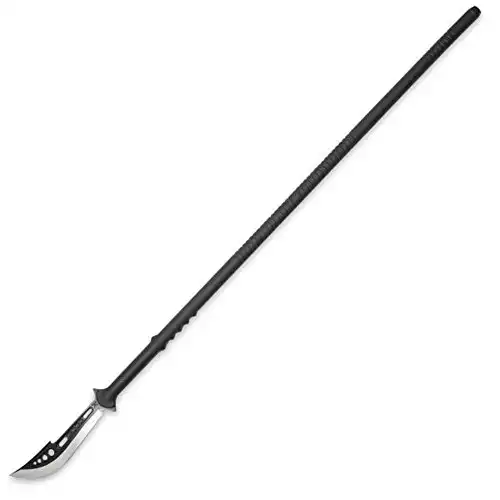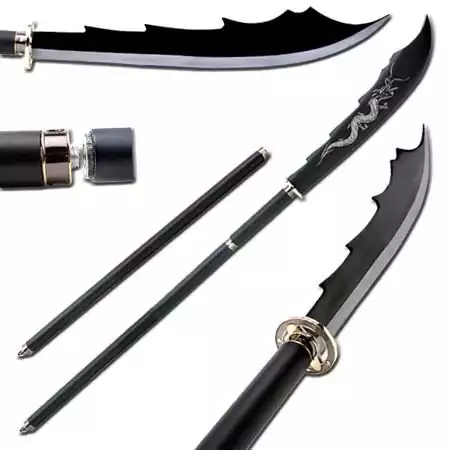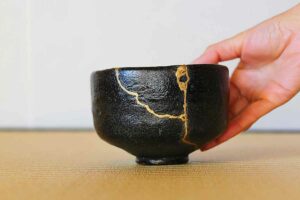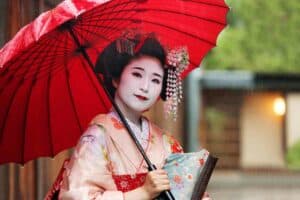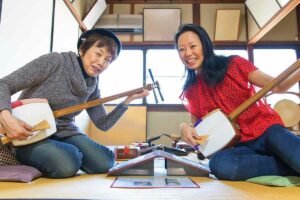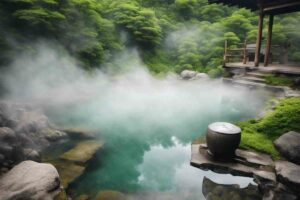Japanese Female warriors (or onna-bugeisho) fought in battles alongside samurai men.
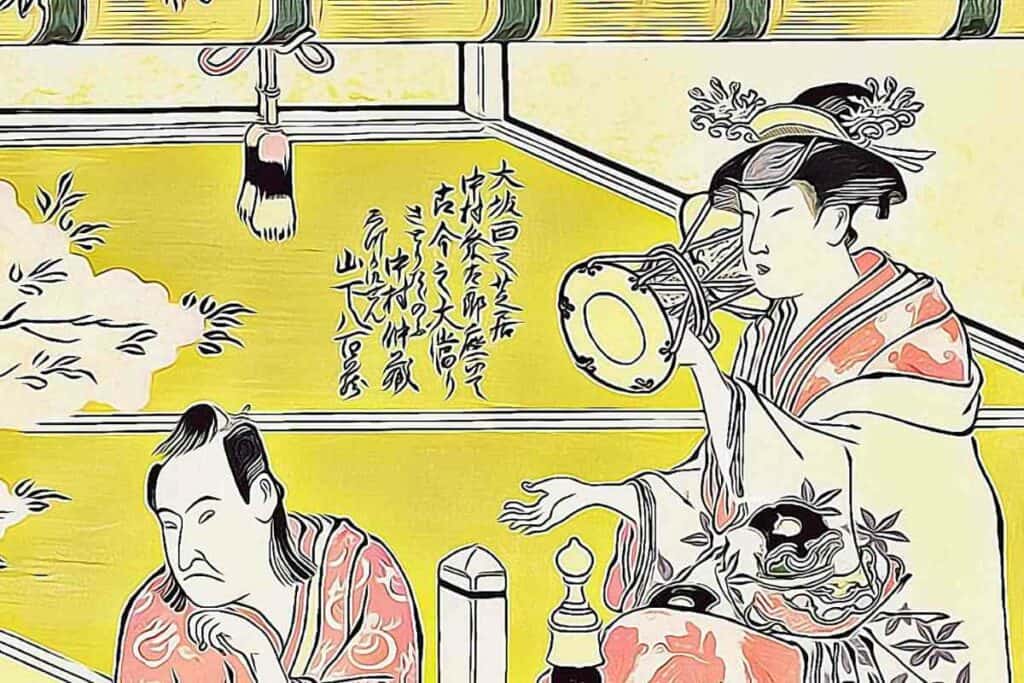
Whereas male warriors would fight with the katana, wakizashi or other deadly weapons, the onna-bugeisha trained to use a naginata.
Table of Contents
The Naginata
The naginata was a long weapon with a curved blade that allowed them to keep their distance from their enemies.
The length, better suited to their smaller stature, helped the women stay balanced in combat.
|
4.6
|
3.4
|
|
$109.99
|
$79.95
|
These female samurai were every bit as deadly as their male counterparts, trained to the highest level in self-defense and offensive maneuvers.
Female warriors were known to use other weapons as well, including:
- Katana – known as the blade and soul of a true warrior
- Yumi – an ancient Japanese crossbow
- Tanto – a double-edged knife
- Kabutowari – a skull-breaking knife
Let’s find out more about some of the most famous female warriors.
1. Empress Jingu
Empress Jingu (c AD 169-269) was one of the first samurai warriors.
Consort to Emperor Chuai, she served as the Regent of Japan from 209 until her death in 269, when her son Ojin ascended.
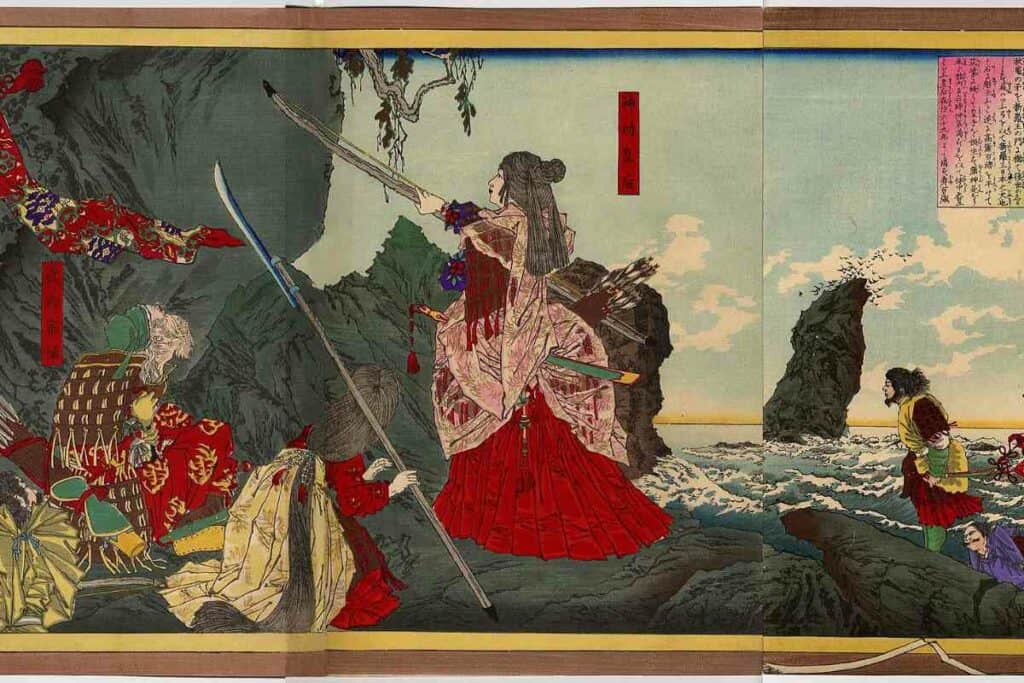
In 200 AD, Jingu led her troops to battle in the Conquest of Korea, showing incredible talent on the battlefield and organizational skills.
Although traditionally women at this time were second to men, exceptions were made for women like Jingu.
Women like her with strong personalities and fierce, independent natures were called to fight alongside the male samurai.
2. Tomoe Gozen
Widely believed to be the most famous onna-bugeisha in Japanese history, Tomoe Gozen fought in the Genpei War (1180-1185) and served as principal commander in several battles, making her one of Japan’s first true military generals.
Tomoe led 300 female samurai into battle against over 2000 enemies and was one of only five warriors to survive.
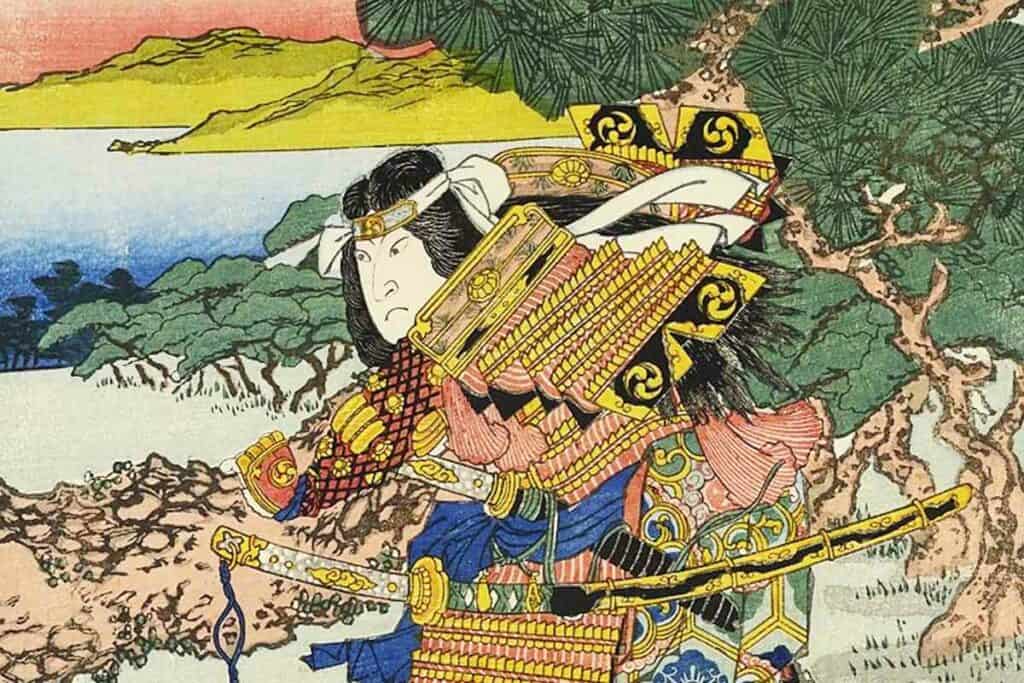
Tomoe was well-known for her mastery of the katana, was a talented archer, and was an excellent horseback rider. It is unclear what happened to Tomoe in the end.
Some say she died in battle, others say she rode away carrying an enemy’s head and disappeared. Another story claims she married busho Wada Yoshimori, becoming a nun after his death.
3. Hangaku Gozen
Hangaku Gozen, sometimes known as Itagaki, also fought in the Genpei War however, she allied with the Taira, who lost the war.
Hangaku was described as “an expert archer and able to hit her target with pinpoint accuracy.”
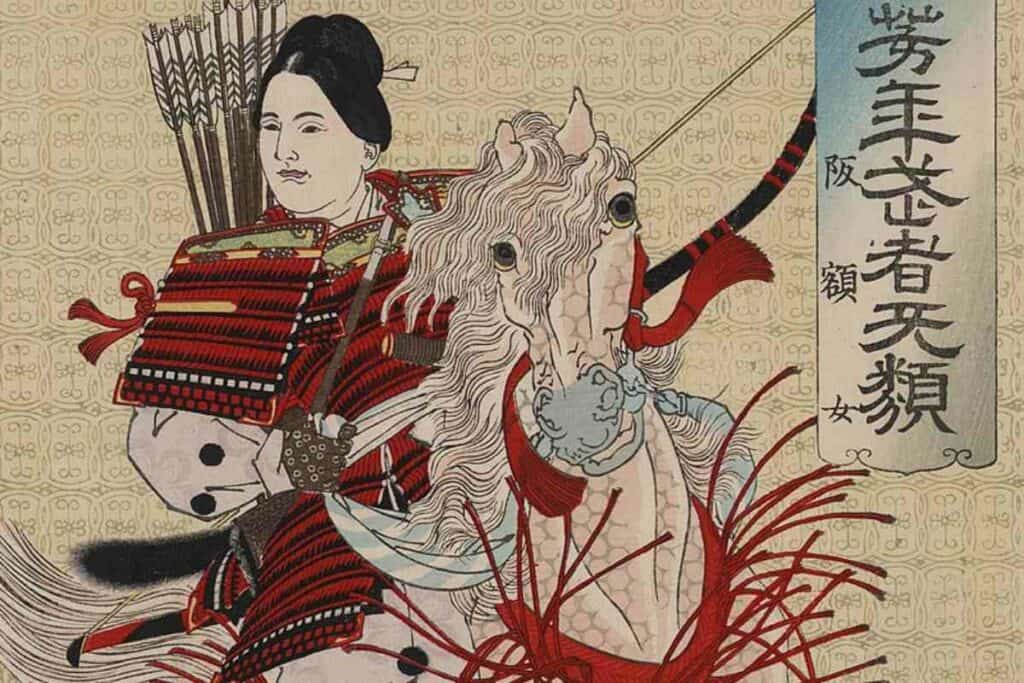
Hangaku let her hair down in a similar style to a pageboy and wore a breastplate (Haramaki) which was part of the armor.
Hangaku stayed up on the turret in battle, wanting to shoot down every single enemy warrior. It was said that “Hangaku’s arrows never fail to kill the target enemies.”
Captured during the war, she was taken prisoner and fell in love with one of Minamoto’s soldiers. Hangaku and Asari Yoshito had a daughter together and went on to live a peaceful life.
4. Yamakawa Futaba
The daughter of shogunate officials in Aizu, Yamakawa Futaba was trained to fight from an early age.
She consequently participated in the defense of Tsuruga Castle when it was besieged during the Boshin War.
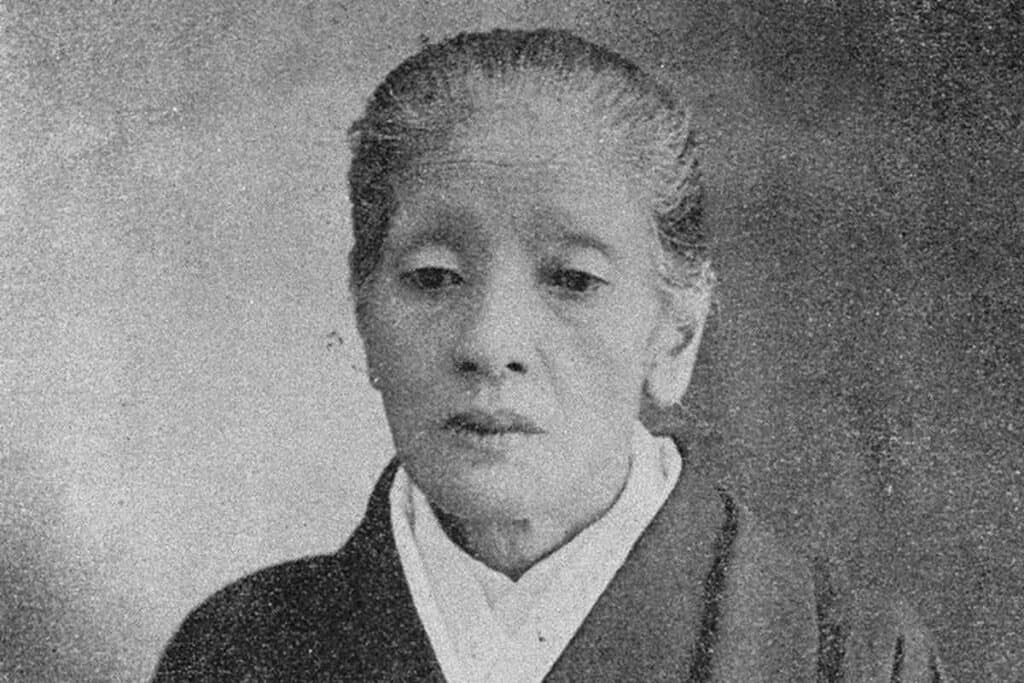
Yamakawa survived the month-long siege and went on to lead a movement demanding improved education for women and girls in Japan.
A true warrior not just on the battlefield, but for women’s rights.
5. Yamamoto Yaeko
Yamamoto Yaeko (1845-1932) was born to a gunnery instructor for the Daimyo or the Aizu domain, learning to shoot under her father’s skilled instruction.
Highly skilled in shooting, she stood out from the crowd. Yamamoto was part of the defense of Aizu when the Boshin War broke out in 1868.
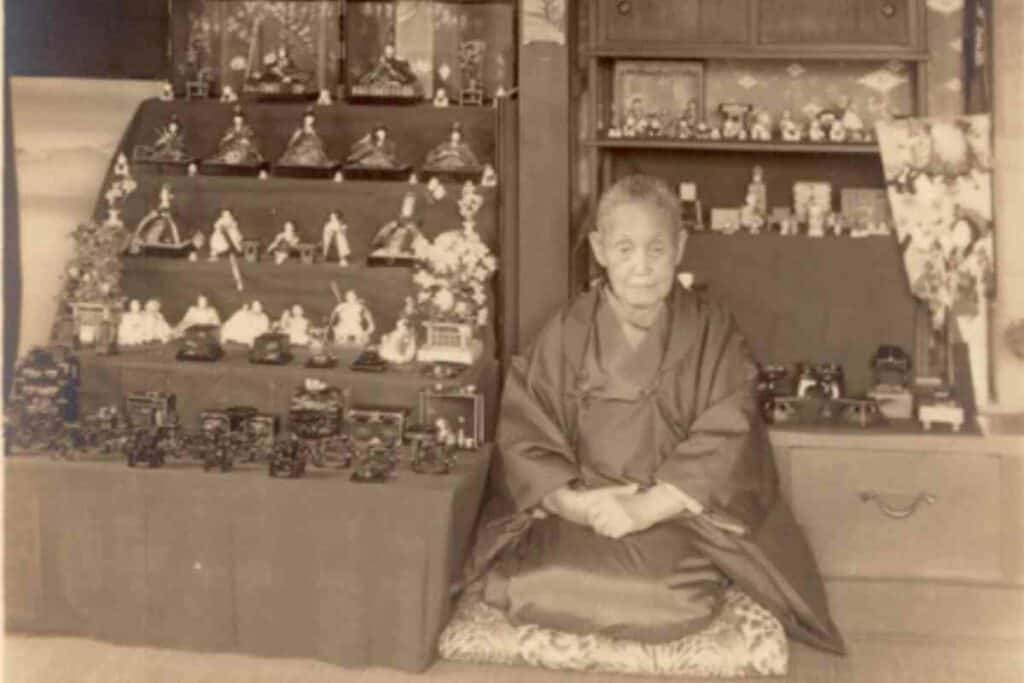
Fighting against the Meiji government and coalition forces, she took part in defending the Aizuwakamatsu Castle with her spencer repeating rifle.
Yamamoto later moved to Kyoto and qualified to become a tea master of the Urasenke tradition, with the art name of Niijima Sochiku.
She also helped found Doshisha University, a Christian school in Kyoto, and lived to be 87 years old.
6. Nakano Takeko
Another famous Aizu defender was Nakano Takeko who sadly lived a short life (1847-1868).
The daughter of an Aizu official, she was trained in martial arts, even working as an instructor in her late teens.
In the Battle of Aizu, Nakano led a troop of female samurai against the Emperor’s forces, fighting with her trusty naginata, the traditional weapon of choice for female samurai.
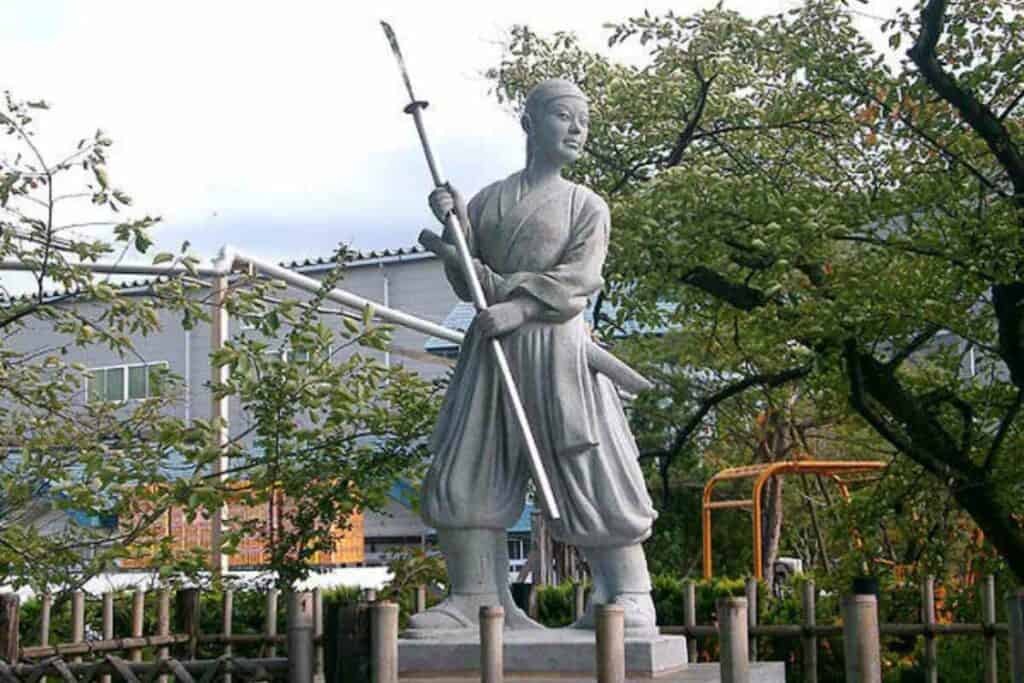
Sadly, Nakano came to a tragic end. Leading the charge against the imperial troops, she took a bullet to her chest.
Accepting her fate, she ordered her sister to chop off her head before her enemies could do so. Her sister, Yuko, did as she was asked, and Nakano’s head was buried under a tree.
7. Ikeda Sen
Born in the Owari province around 1563, there is little information about Ikeda. However, we know she was a notable female samurai who participated in many military campaigns.
Ikeda was most famous for leading a unit consisting of 200 musketeers into battle, impressing all who met her with her incredible martial art skills.
There were rumors that her incredible skill led her to become a female lord or Daimyo. Ikeda served the Oda clan alongside her family, training to a top level in a form of martial arts called naginata-do.
This was created by Japanese women from the samurai family with the aim to protect their homes and family in times of war.
After her first husband died in battle, Ikeda married one of the top members of the Toyotomi government, Daimyo Nakamura Kazuuji, eventually becoming a nun after his death.
Final Thoughts on 7 Famous Japanese Female Warriors
These incredibly skilled and committed fighters were feared by many of their male counterparts, easily gaining the respect and admiration of their followers.
Their lives, powerful and intriguing, provided inspiration for some popular films including:
- Kill Bill Volume 1 (2003)
- Lady Snowblood (1973)
- Azumi (2003)
- Ichi (2008)
- Onibaba (1964)
Leaving an amazing legacy behind them, it’s undeniable that these fighters changed the future for women and Japan.
- Japanese Wedding Traditions (Venue, Dress & Food)
- Kintsugi: Perfectly Imperfect Ceramic Art (with 8 Examples)
- 5 Best Japanese Makeup Brushes for a Flawless Finish
- Maiko Vs Geisha Compared: What Are the Differences?
- Japanese String Instruments (9 Famous Ones)
- Best Onsen Destinations In Japan (10 Top Locations)

